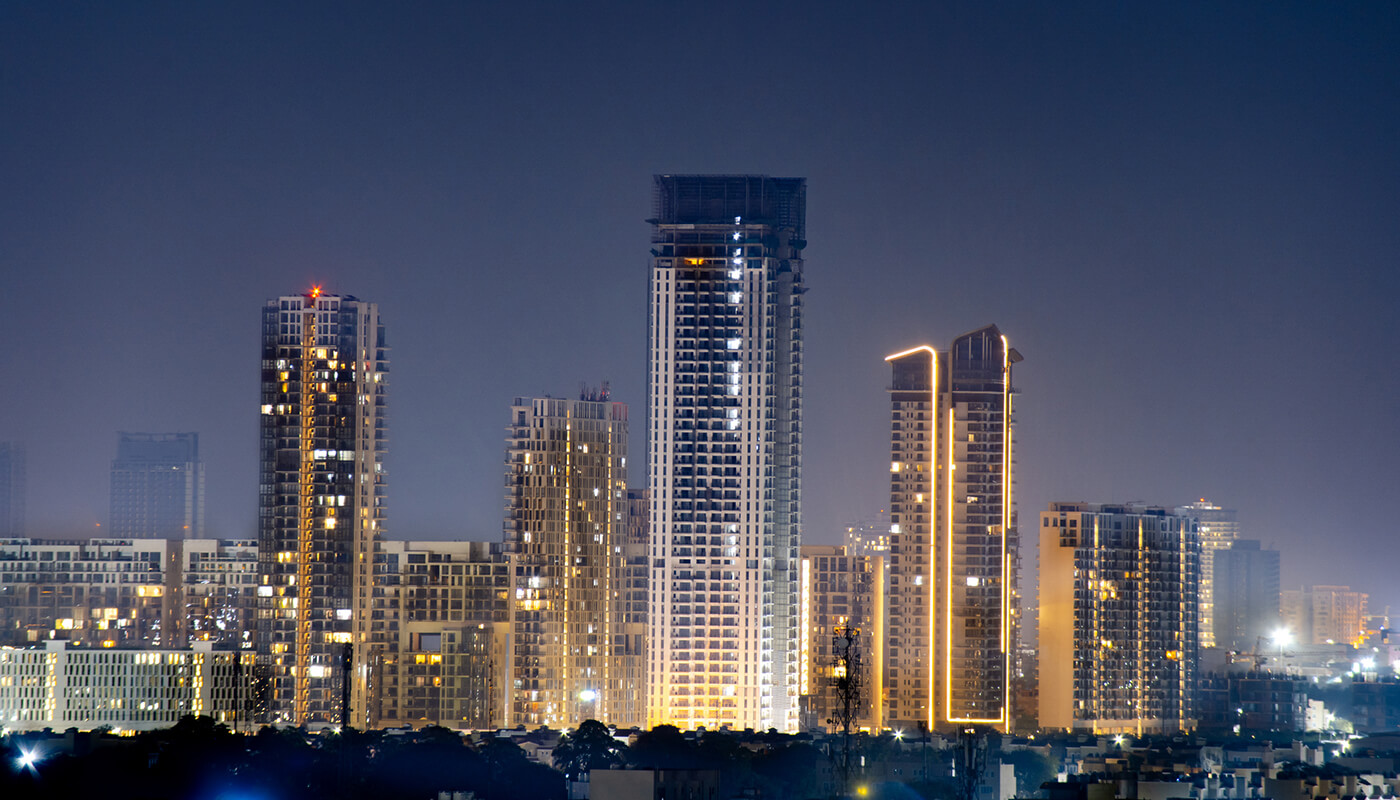
Bad loans and deteriorating asset quality continue to plague banks in India. Last September, the gross non-performing assets ratio (GNPA) at Indian banks stood at 7.5%, but that number potentially could double in just a year's time.
In its recent financial stability report, the Reserve Bank of India estimated that Indian banks' GNPA ratio could increase to 13.5% under a baseline stress scenario and 14.8% under a severe stress scenario by September 2021. What's more, for public-sector banks (PSBs), GNPA may rise to nearly 18%.
Vivek Kaul, the author of Bad Money: Inside the NPA Mess and How It Threatens the Indian Banking System, is a well-known commentator and podcaster who has written several books on India's economy. He talked with Risk Intelligence about the NPA dilemma, the impact of COVID-19, default risk, regulatory flaws, and India's path to economic recovery.
Risk Intelligence (RI): Can you pinpoint the primary reason for the bad debts and non-performing assets (NPAs) in India? Where does the fault actually lie?
Vivek Kaul (VK): If you look at the current phase of bad loans, which have accumulated over the last five years, I think the main reason for that lies in the period pre-2008. Between 2004 and 2006, the Indian economy grew by greater than 9% annually, resulting in a great deal of optimism among the politicians, bankers, businessmen, entrepreneurs and the public, in general. Suddenly, there was this story going around that India will be the next China, which basically meant that since China was growing in double digit rates, India would follow a similar path.
Entrepreneurs and businesses saw an opportunity. They believed that the growth would fuel demand for goods and services. They started to invest in the infrastructure that would drive this growth and fulfill the demand. The data between 2004 and 2008 shows that the loans given by banks in India went through the roof, and that is where it all started: the belief that India would continue growing at 9%.
RI: In India, the government uses PSBs to increase the money supply in the market. The latest financial stability report of the RBI, released in January 2021, says that the GNPA ratio of PSBs may increase to 17.6%. That number is frightening.

VK: It needs to be mentioned that if you calculate the numbers properly, they are even worse. What has happened is that the categorization of IDBI Bank - which was by far the worst-performing PSB, with a very high NPA of almost 32% - has been changed to that of a private bank. IDBI has NPLs of close to ?500 billion, but these are now categorized by the RBI as the bad loans of a private bank, rather than a PSB.
Another well-kept secret of banking in India is that once a bad loan has been on the balance sheet of a bank for four years, it can be written off. After that period of time has elapsed, the loans drop from the balance sheet of the bank, reducing the bad-loan numbers for PSBs.
Moreover, Indian banks have a very low recovery rate of bad loans. Once you take these factors into account, it gives an entirely different dimension to the story.
Here's what will happen: the bad loans that were recognized, let's say, in 2016, 2017, and 2018, will keep getting dropped from the balance sheet of banks in the next couple of years. This will lead to the bad loans number coming down in the 2020-2021 financials of the banks. But there will also be fresh bad loans, which we will start to see on account of COVID-19.
RI: You mentioned about the mid-2000s and the optimism that followed. But then the global crisis happened in 2008, which led to the optimism not being there. What do you think the spirit of the times now is with the COVID-19 slump and recession? How will it impact the mess further, and what will recovery look like?
VK: This time around, the issue is a little different. Common sense tells us that this time there will be retail defaults, as well corporate defaults, because salaries have been slashed and people have lost jobs. The entire retail sector, in fact, has seen huge destruction.
The data for listed Indian corporates for the quarter July to September 2020 actually shows that their profits went up, mainly because they have cut down their costs. But when a corporate cuts costs, someone else's income is being impacted.
For example, if you're a corporate who's making profits, and you've managed to cut down on your raw material costs, some supplier somewhere is seeing reduced business. As a consequence, that supplier is likely doing the same thing with some of its third-party vendors. The impact is felt across the hierarchy, and that's problematic.
We haven't yet begun to see the impact of this, because there is a case going on in the Supreme Court about whether the interest on loans during the COVID-19 months should be waived. Until that decision arrives, banks are not allowed to recognize defaults as bad loans. So, we will come to know how bad the defaults situation is at PSBs only after the Supreme Court hands down its decision.
It is also important to remember that more than 50% of all retail loans are home loans, and people will try their best to not default on home loans. So, that is a very good thing going for banks. But the other kinds of loans - e.g., credit card debt, personal loans, consumer-durable loans and auto loans - will see an uptick in the defaults.
RI: In this case, culture could also play a big role, right? In the U.S., the subprime crisis was essentially driven by home-loan defaults, but in India, people probably try to hold on to their homes more dearly, correct?
VK: Yes, the stigma of losing your home is huge in India. People will try selling everything, defaulting on everything else before they default on their home loan.
The other good thing is that even if people default, banks may not lose much. The first reason lies in the loan-to-value ratio (LTV). The LTV of entire home-loan business in India is between 65% and 70%, giving some margin to the banks.
What's more, over and above the registered price of a house, in many parts of the country, there is a so-called “black portion” in mortgages, which gives a bank the right to recover most of the home loan, if defaulted, by selling the house.
RI: You mentioned in your book that there was an era of easy money in the Indian financial system in the aftermath of the financial crisis of 2009. Do you predict the same will happen after COVID-19?
VK: That is already happening. The amount of money floating around right now is just humongous.
Banks don't know what to do with it. That is clearly visible in the fact that, one, they're depositing billions of rupees with the RBI to the reverse-repo window, because they don't have any use for that money.
There is indeed a huge amount of liquidity in the system. Some of this has been driven by the RBI printing money, some of it has been driven by the fact that the psychology of a recession is totally in place.
Even though interest rates are falling, people want to save money with banks as deposits because, as of now, they are more worried about return of capital than return on capital.
People are scared. They have lost jobs, and salaries have been cut. Even for those who have not been economically impacted, the psychology of fear is at play, given that everyone wants to be prepared for a situation where, say, jobs are lost, and they are unable to find new positions.
Businesses are not borrowing, too, because with private consumption coming down, there is no need for businesses to borrow and expand. All these factors have come together, and there is consequently a huge amount of liquidity in the financial system.
RI: What can you say about India's path to economic recovery and the current so-called technical recession that we are in? How does it compare to other countries?
VK: The Indian economy contracted by around 15.7% during the half-year from April to September of 2020. In between April and June, we were right at the bottom. Between July and September, we were in the bottom quartile, though not right at the bottom. There were countries, like Chile and the UK, which performed worse than India.
Now, to answer your question about when the economy will recover and when growth will go back into positive territory, there are varying opinions. But what most people are not talking about is the fact that India will not return to its 2019-20 GDP level until either late 2021 or early 2022, at the earliest. By the time we see this return, moreover, we will have lost two years of economic growth.
Another point to keep in mind is that a lot of this economic contraction is not simply because of COVID-19. The economy had been slowing down much before the pandemic struck. Indeed, if you look closely at the data between October and December 2019, India grew by just 4%. So, issues which were plaguing the Indian economy, even pre-pandemic, will now only get worse.
For example, the investment-to-GDP ratio has been falling in India since 2012, and that is not going to improve anytime soon. Moreover, a lot of growth that is happening, or will happen, is basically jobless growth.
The rate of unemployment has been coming down, but how that rate is coming down is very interesting. It is because the labor force participation rate - or the proportion of the population that is looking for jobs - is also declining.
What that means is that many people who have been unable to find jobs have stopped looking for a job, and, hence, have dropped out of the labor force. This is a very worrying trend, because India already has a low labor force participation rate (especially among women), and I think this will only get worse post-pandemic.
The growth will eventually come back. For an economy of India's size, people will eventually consume and spend money, and we can debate about when this will happen. But long-term growth prospects of India have now, I think, been hurt, and all the talk of 8%-9% growth is overly optimistic. At this stage, even a 6% growth rate will be brilliant for India.